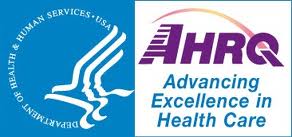Patient-Reported Health IT Technology and Ambulatory Workflow
The Agency for Healthcare Research and Quality (AHRQ) is conducing a study to look at the impact on ambulatory workflow from collecting patient information using health IT technology. The study, Patient-Reported Health Information Technology and Workflow, has been submitted to the Federal Register and is open to public comment. The comment period ends May 31, 2013.
Successful health IT implementation requires careful attention to the workflow of clinicians and others involved in care delivery. However, few studies have examined how health IT can change workflow in ambulatory physician practices. Further, in most studies that address health IT in ambulatory settings, workflow is not the main focus of the research. The health IT literature has not focused on sociotechnical factors, such as patient or provider characteristics, physical environment and layout; technical training and support; functionality and usability of health IT; worker roles, staff workload, stress, and job satisfaction; and communication flows. Although many studies have concluded that changes in workflow occur when implementing different health IT applications, few studies have actually examined how ambulatory workflow changes.
Current processes for gathering patient information using health IT technology includes patient portals, secure email messaging and e-formsyet the agency suggests that “the use of patient-reported information is not yet widely integrated into health IT.” The research project will look at the impact of sociotechnical gaps that exist with providers, their staff and patients in the capture and use of patient-reported information. The end goal is to answers three key questions:
- How does the use of health IT to capture and use patient-reported information support or hinder the ambulatory workflow from the viewpoints of clinicians, office staff, and patients?
- How does the sociotechnical context influence workflow related to the capture and use of patient-reported information?
- How do practices redesign their workflow to incorporate the capture and use of patient-reported information?
The agency sees the research from this study being used in several ways:
- Identify workflow components when implementing health IT technology to capture and use patient-reported information
- Identify best practice guidelines for health IT implementation in an ambulatory practice
- Identify issues impacting the design and evaluation patient-centered health IT tools
The results of the study findings will be published on the AHRQ website. You can learn more about the study and make a public on the Federal Register website.

